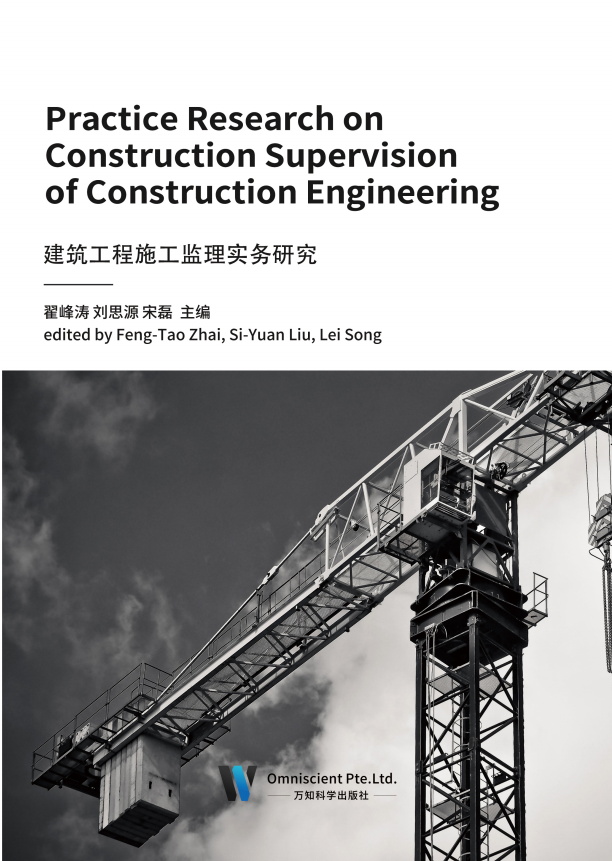
作为推动国民经济发展的重要基础产业,建筑企业近年来伴随城乡一体化建设 进程的不断加快,其建筑规模和建设数量也取得了突破性进展,为在当前多元化市 场竞争环境中提高企业自身的竞争力和竞争优势,优化工程项目施工技术和加强对 施工现场的管理是现阶段推动企业可持续发展目标实现的重要基础和根本前提。 社会现代化发展趋势下,人们对于建筑行业的需求越来越大,建筑工程也成为 关乎我国社会民生的重要内容。基于社会发展现实,我国建筑工程呈现出多样化、 多功能化发展。如信息技术的发展推动了智能建筑工程技术的萌芽和发展应用;产 业转型升级要求厂房等建筑项目建设具有多功能性、采用新技术、新工艺满足生产 需求等。新的施工材料、新的施工技术手段所对应的施工管理措施也是不同的,可 以说当前施工技术改变了建筑工程项目的变革发展。 进行行之有效的施工管理是保障建筑工程项目质量与经济效益的重要组成部 分,也拥有着决定性的地位与作用。虽然我国的建筑工程行业正在取得着不断的进 步,但是在施工实践中仍然有着一定的不足,因此相关人员要重视问题并解决问题, 进而长久促进建筑行业的协调与发展。 虽然在当今阶段受传统管理思想的影响,部分施工企业还不能得到有效的发 展,但可采取的改进措施也是多种多样的。任何情况下,科学管理施工进程都可以 在一定程度上促进企业的良性发展,兼以对企业利益、市场需求以及社会需要的深 度把控,不难保障企业综合竞争力的提高。

随着社会经济的发展,市场竞争日益激烈,在企业发展中产品的质量具有决定 性的作用。同样,在建筑工程中,工程项目施工的质量越来越受到人们的关注与重 视。工程项目施工监理是工程质量管理的重要内容,监理单位在工程施工中要积极 发挥其监督与管理的作用,严格控制和审查施工过程的各个环节,有利于保证工程 项目施工质量,提高企企业的经济效益与社会效益,提升企业的市场竞争力。 建筑工程施工监理工作的有效开展是保障我国城市建设中建筑施工质量的关 键,是实现我国建筑行业与建筑施工监理行业良性发展的关键。在现代城市建设脚 步不断加快的今天,城市建筑工程建设施工行业得到了快速的发展。在城市建筑建 设施工中,施工监理工作是保障工程项目施工质量、保障投资企业及业主合法权益 的重要工作。 随着我国监理法规的健全以及监管工作力度的不断加大,我国建筑工程施工中 监理工作的重要性也日益凸显。我国建筑工程施工监理的总体形势处于健康发展趋 势。但是,受我国建筑施工企业管理水平、市场经济意识印象以及施工监理人员综 合素质等因素影响,我国建筑工程施工监理工作中仍存在诸多的问题。这些问题的 存在在一定程度上影响了我国建筑施工监理行业的发展,影响了建筑工程施工监理 工作质量。因此,在工程项目施工中,要重视并完善工程监理,加强对于施工质量、 工程进度、工程投资、安全生产以及合同管理等方面的监理,促使监理更加科学化 与规范化,提高工程项目施工管理水平,提高企业经济效益,促进企业的持续健康 发展。

在近些年来我国经济飞速发展的情况下,我国建筑业的规模也在逐步增大。中 国国家统计局国家数据表明,2018 年,建筑业从业人数 5563.30 万人,建筑业企业 单位数 95400 个,比上年同期增加 7341 个。在全国工业总从业人数占据三分之一, 总产值 235085.53 亿元。我国建筑业的从业人数在全国就业人数中占着举足轻重的 地位,但是建筑业从业人员的安全情况仍存在不少问题。由于工程建设的规模增加、 从业人员的数量增长,使得建筑工程施工安全事故发生率进一步的增大,事故发生 后造成的经济损失十分巨大,影响极其恶劣。据统计分析,美国由于建筑工程施工 导致发生的安全事故造成经济损失已经占到工程总造价的百分之八,在英国这个数 字已经达到了百分之四左右,而在香港安全事故造成的经济损失比例已经高达百分 之九。建筑业的正常、平稳发展已经受到安全问题的直接影响,并且由于安全管理 水平的不足也对人民生命财产安全带来的极大的危害,安全事故已成为当下全世界 关注的焦点。

随着人们生活水平的不断提升,建筑施工质量已经走进了人们的事业。对于当 前的建筑行业正常运行来说,施工组织管理、技术资料保障、现场施工、经济效益 等都是重要渠道,但是我们建筑施工管理上依然存在较多问题。所以,我们应当针 对这些问题,对建筑施工进行优化,从而提升全员的管理意识,更好的服务于工程 建设。在建筑项目施工过程监理人员想获得现场监理管理工作的主动权,从而做到 表态有据、办事有根的效果,就要求监理人员把好产品的质量关。大量的事实证明, 随着人民生活水平的不断提高,业主们对施工质量有了更高的要求,如果监理管理 人员在施工阶段未起到自己应有的作用,将会导致建筑物的质量得不到保障。因此, 必须采取措施,提高监理管理在现场施工中的作用,以更好的提高建筑工程的整体 质量。 工程监理管理工作是一项系统性、专业性很强的工作,其涉及到的相关领域比 较多、管理程序比较复杂。同时,在进行监理管理工作时,不仅要更好的体现其阶 段性特征,而且还要把好建筑工程的安全关、质量关,只有这样才能达到监理管理 工作的真正效果。本文将会对施工管理与监理进行系统性的探讨和分析。

建筑钢结构作为一种新型的节能环保的建筑体系,被誉为 21 世纪的“绿色建筑” 之一。钢结构以其独有的稳定好、使用寿命长以及内部结构牢固等特点成为现阶段 建筑发展的新的方向。钢结构的设计质量会对建筑整体的质量和稳定性产生非常重 要的影响,在钢结构设计的过程中还有很多地方需要不断的改进和完善,为提升建 筑钢结构的质量,必须注重提高建筑钢结构设计水平。 在建筑结构设计时,钢结构设计质量对整个建筑结构的设计质量有着十分重要的 影响。钢结构设计过程中对设计人员的专业技能和工作经验有着非常高的要求,设计 必须要严格按照设计规划来进行,同时还要充分考虑到工程项目的具体情况。在建筑 结构设计过程中,钢结构设计是重要的组成部分,其主要是将钢结构设计成果运用变 成到钢结构产品的过程。设计时要充分掌握工程设计要点,使设计效果得到充分的展 现,只有这样才能不断的提升钢结构设计的水平,实现设计的效果和目标。设计人员 在对建筑结构设计中钢结构进行设计时,必须严格遵守相应的设计要求,掌握工程图 纸中的设计要点,以此来保障钢结构设计的高水平、高质量。只有这样才能不断的提 升钢结构设计的水平,实现设计的效果,树立质量意识,设计人员要充分认识到任何 一个设计环节出现错误,都会严重影响到构件的安装质量,危及到建筑整体结构的稳 定性、安全性,容易引发重大的安全事故,造成财产损失、人员的伤亡。因此,设计 人员在设计的过程中要严格执行设计的规范和原则,对结构设计的要求予以充分的了 解和掌握,设计人员还要针对不同的部位,采取不同的设计措施进行优化设计,保证 钢结构工程设计质量,为工程顺利进行奠定良好的基础。 本书以单层钢结构、多层钢结构和高层钢结构为重点,详细介绍了不同钢结构 体系的特点及设计思路和原则,还阐述了预埋件、钢结构防护及施工验收等相关内 容。为了便于读者更好地理解相关概念和设计思路,进一步校正了文字纰漏,修订 了不妥之处。